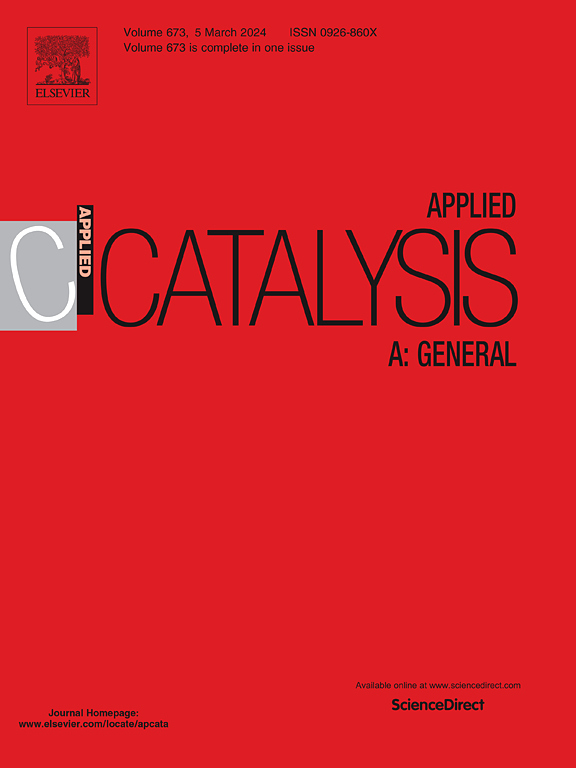Unravelling the support-dependent active structures and SO2-tolerance of supported Pt catalysts to remediate toxic CO contaminant: An experimental and theoretical perspective
IF 4.8
2区 化学
Q2 CHEMISTRY, PHYSICAL
引用次数: 0
Abstract
Catalyst deactivation caused by SO2 poisoning generally hinders commercial viability of CO oxidation catalysts in the field of industrial flue gas purification. XPS results, CO-DRIFTS spectra and DFT calculations suggested that Pt was highly-dispersed and remained the oxidative states on SnO2 support, resulting in that the rate-determining step of CO oxidation is to clean up the adsorbed CO and PtS2 species is readily formed in a SO2-contained hydrothermal environment. It predominantly maintained metallic Pt0 in the Pt/WO3 catalyst, thereby led to cleaning up the activated oxygen atoms as the rate-determining step. It is very difficult to remove the sulfur species in SO2-poisoned catalysts within 600 °C and the mechanisms of CO oxidation are not affected by SO2 poisoning for Pt/SnO2 and Pt/WO3 catalysts. These findings provide some significant insights to understand the mechanisms of CO oxidation and SO2-tolerance.
从实验和理论的角度研究负载Pt催化剂修复有毒CO污染物的依赖于载体的活性结构和so2耐受性
SO2中毒引起的催化剂失活通常会阻碍CO氧化催化剂在工业烟气净化领域的商业可行性。XPS结果、CO- drifts光谱和DFT计算表明,Pt在SnO2载体上高度分散并保持氧化状态,表明CO氧化的速率决定步骤是清除吸附的CO,在含so2的水热环境中易于形成PtS2。它主要维持Pt/WO3催化剂中的金属Pt0,从而导致清除活性氧原子作为速率决定步骤。Pt/SnO2和Pt/WO3催化剂的CO氧化机制不受SO2中毒的影响。这些发现为理解CO氧化和so2耐受性机制提供了一些重要的见解。
本文章由计算机程序翻译,如有差异,请以英文原文为准。
求助全文
约1分钟内获得全文
求助全文
来源期刊

Applied Catalysis A: General
化学-环境科学
CiteScore
9.00
自引率
5.50%
发文量
415
审稿时长
24 days
期刊介绍:
Applied Catalysis A: General publishes original papers on all aspects of catalysis of basic and practical interest to chemical scientists in both industrial and academic fields, with an emphasis onnew understanding of catalysts and catalytic reactions, new catalytic materials, new techniques, and new processes, especially those that have potential practical implications.
Papers that report results of a thorough study or optimization of systems or processes that are well understood, widely studied, or minor variations of known ones are discouraged. Authors should include statements in a separate section "Justification for Publication" of how the manuscript fits the scope of the journal in the cover letter to the editors. Submissions without such justification will be rejected without review.
 求助内容:
求助内容: 应助结果提醒方式:
应助结果提醒方式:


